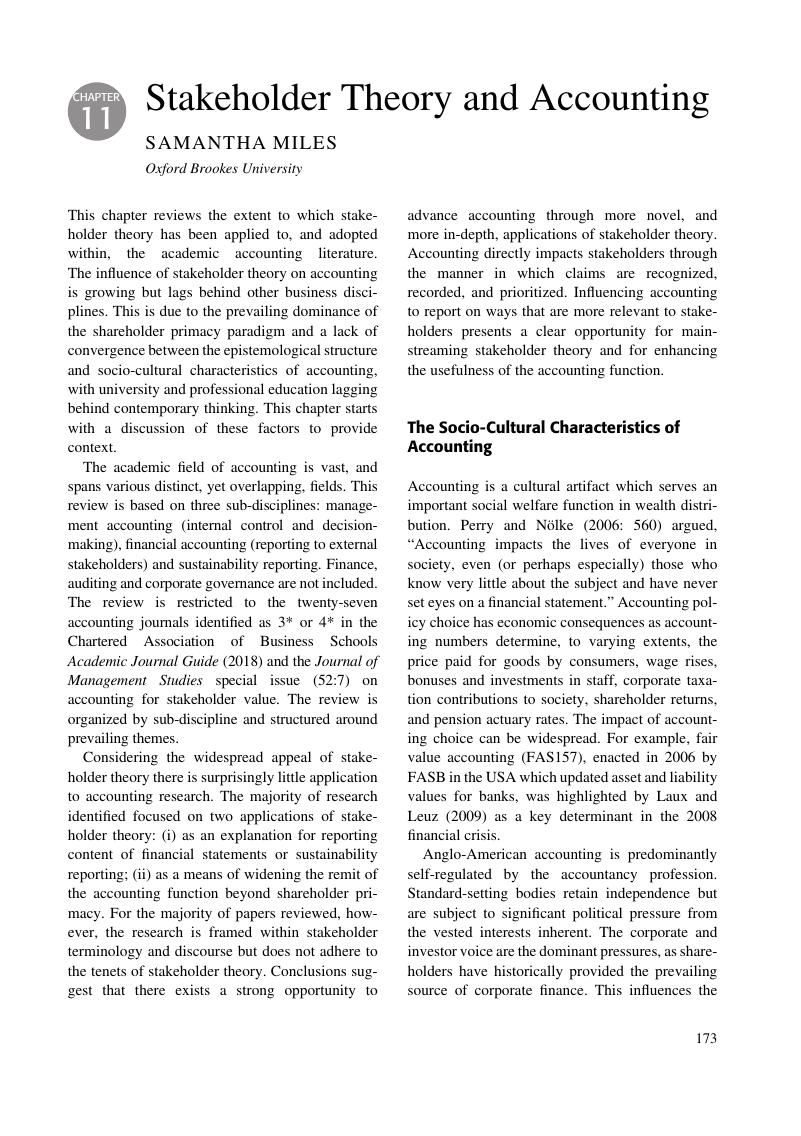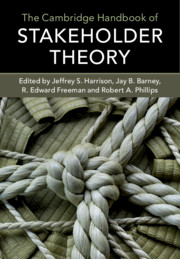Book contents
- The Cambridge Handbook of Stakeholder Theory
- The Cambridge Handbook of Stakeholder Theory
- Copyright page
- Contents
- Contributors
- Chapter Summaries
- Part I Theoretical Foundations of Stakeholder Theory
- Part II Stakeholder Theory and Society
- Part III Stakeholder Theory in the Business Disciplines
- Chapter 9 Motivating Boundary-Spanning Employees to Engage External Stakeholders
- Chapter 10 Stakeholder Value Equilibration and the Entrepreneurial Process
- Chapter 11 Stakeholder Theory and Accounting
- Chapter 12 The Stakeholder Perspective in Strategic Management
- Part IV Stakeholder Theory in Education and Practice
- Part V New Voices in Stakeholder Thinking
- Index
- References
Chapter 11 - Stakeholder Theory and Accounting
from Part III - Stakeholder Theory in the Business Disciplines
Published online by Cambridge University Press: 01 May 2019
- The Cambridge Handbook of Stakeholder Theory
- The Cambridge Handbook of Stakeholder Theory
- Copyright page
- Contents
- Contributors
- Chapter Summaries
- Part I Theoretical Foundations of Stakeholder Theory
- Part II Stakeholder Theory and Society
- Part III Stakeholder Theory in the Business Disciplines
- Chapter 9 Motivating Boundary-Spanning Employees to Engage External Stakeholders
- Chapter 10 Stakeholder Value Equilibration and the Entrepreneurial Process
- Chapter 11 Stakeholder Theory and Accounting
- Chapter 12 The Stakeholder Perspective in Strategic Management
- Part IV Stakeholder Theory in Education and Practice
- Part V New Voices in Stakeholder Thinking
- Index
- References
Summary

- Type
- Chapter
- Information
- The Cambridge Handbook of Stakeholder Theory , pp. 173 - 188Publisher: Cambridge University PressPrint publication year: 2019
References
- 12
- Cited by



